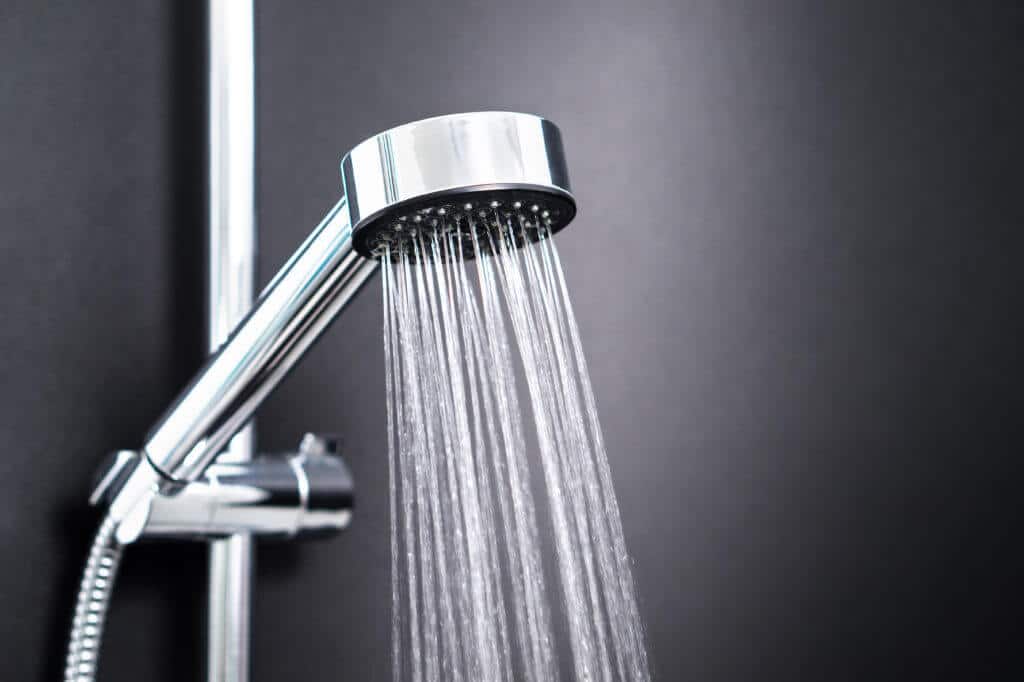What is Included in Water Heater Maintenance?
BLOG CATEGORIES
140 South St., Walpole, MA 02081
P (508) 668-8200 Toll Free (877) 668-8822
info@sinclaireboston.com
Master Plumber License #9530,
Sheet Metal Master-Unrestricted #5442
Sinclaire Enterprises, Inc.
140 South St., Walpole, MA 02081
P 508.668.8200 Toll Free 877.668.8822 info@sinclaireboston.com
Master Plumber License #9530,
Sheet Metal Master-Unrestricted #5442
need service?
let us contact you
A water heater heats up cool water from your water piping system. When you turn on a faucet or start your washing machine, the water heater distributes the hot water around your home. Water heaters are used to heat potable water, which is water that is clean and safe for cooking and cleaning.
Your water heater is one of the most essential parts of keeping your home comfortable. Don’t believe us? Enjoy your tap-cold shower. Luckily, there are steps you or a technician can take steps to keep your water heater in good working condition and prevent any issues. Water heater maintenance in Norfolk is easily achievable.

What’s in a Water Heater?
Most water heaters contain the following parts or pieces:
- Flue pipe: pushes the exhaust fumes and other wastes of a water heater outside.
- Hot water outlet: This removes hot water if the water heater is under too much strain.
- Dip tube: Holds cold water that will be heated.
- Thermocouple: This component of the pilot light assembly connects to the gas control valve outside the heater.
- Drain valve: This valve drains the water heater.
- Anode rod: Aids in preventing corrosion and wear on the water heater.
- Insulation: Keeps heat from escaping from your water heater, saving you money.
- Cold water shut-off valve: This valve prevents cold water from entering your water heater.
- Gas Supply Valve: Turns off the gas feed to a gas water heater.
- Draft diverter: Collects exhaust gases and safely vents them to the outside.
- Thermostat/Control Valve: This device regulates the water heater’s temperature.
- Temperature and pressure relief valve (T&P valve): Lowers the heater’s temperature and pressure by releasing water.
- Burner: When the pilot light is lighted, the burner heats the cold water.
- Heating Elements: Each water heater contains elements that heat the water.
- Overflow Pipe: If the water within the tank becomes too hot, this pipe will discharge some hot water to relieve pressure.
Getting to know your water heater parts can help you with water heater maintenance in Norfolk.
How to Perform Water Heater Maintenance Canton
There are several steps to take to keep your water heater in good condition.
- Every six months, flush your water heater. If your water is harder or includes more minerals, you should flush it more frequently.
- When you leave town, turn your water heater to vacation mode. The pilot light will remain lit, but no water will be heated.
- Drain and clean out your tank.
- Check your anode rod on a regular basis since it is a crucial component of your water heater.
- If you see your water heater leaking, it might be due to a faulty drain valve. Tighten with a wrench until the bolt is tight.
- Every year, check the temperature release valve.
- Insulate your unit’s pipes and heater if it is older.
- Set the temperature to 120 degrees Fahrenheit.
- Tankless water heater maintenance: The good news is that tankless water heaters do not require much maintenance. However, they should be serviced once a year.
- Electric vs. gas water heater maintenance: Both electric and gas water heaters may be maintained in the same manner. Both types of
- water heaters should be cleaned on a regular basis to avoid rust and corrosion buildup.
- Look at hybrid water heaters if you want more energy-efficient water heaters.
If you’re thinking, “I didn’t even know I had to do maintenance on my water heater! I have no idea how to do any of this,” we hear you. The good news is that if you’re in Norfolk or Canton, we can take care of water heater maintenance for you. Click here for a free estimate on your water heater maintenance.
If you’re more of a DIY type, we will walk you through it.
What You Will Need
- Flathead Screwdriver
- Socket Wrench
- Pipe Wrench
- Garden Hose
- Bucket
How to Flush a Water Heater
Sediment buildup in the tank can lower the energy efficiency of your water heater and block your water pipes. By cleaning your water heater every six months, you may avoid these issues and extend the life of your equipment.
First, turn off your water heater. If it operates with gas, turn off the gas at the source.
Connect a garden hose to the water heater drain outlet close to the bottom and put the other end in a floor drain or a large bucket. It should take about 20 to 25 minutes for your water heater to drain completely.
Open the drain spigot and let the water flow until it runs clear. This should get any sediment out of the bottom of the heater.
How to Check Your Anode Rod
Connect a line to the tank’s outflow tap and drain a few gallons.
Now, unscrew the rod by inserting a 1 1/16-inch socket into the rod’s hex head on top of the heater (or under its top plate). If it’s less than 12 inches thick or calcium-coated, replace it, wrap the threads with Teflon tape, replace it in the tank, and tighten it tightly. If you have limited headroom above the tank, use this segmented rod.
How to Test Your Temperature & Pressure Relief Valve
Turn off the electricity and the cold-water supply valve.
Place a bucket beneath the pipe linked to the temperature-pressure-release (TPR) valve on the tank’s top or side. (If the tank pressure becomes too high, this valve opens.)
Lift the valve’s tab to allow some water to escape, then release it. If water continues to flow, drain the tank partially, remove the old valve using a pipe wrench, and replace it.
Ways to Make Your Water Heater More Efficient and Environmentally Friendly
There are various simple and affordable techniques to improve the running efficiency and lifetime of a water heater.
The advantages of maintaining your water heater are evident. Insulation cuts heat loss by up to 45 percent and can save up to 9 percent on water heating expenses.
You should expect to save up to 5% on energy bills for every 10 degrees you reduce the water heater temperature.
How to Change the Water Heater Temperature
Locate the temperature dial on the tank’s side and unscrew its lid. Using a flathead screwdriver, turn the dial to 120 degrees.
If you expect to be away from home for longer than three days, turn off the water heater or set the thermostat to the lowest setting.
How to Insulate Your Water Heater Pipes
Purchase some self-adhesive 3/8-inch-thick foam pipe insulation in the diameter of the pipes.
Slide the foam as far as you can across the hot and cold water pipes. In the summer, insulating the cold-water line reduces condensation.
Remove the tape and push the insulation shut. Cover the pipe with 1-inch-thick unfaced fiberglass pipe wrap if it is 6 inches or less from the flue.
How to Insulate Your Water Heater
Purchase a large enough insulating blanket to cover your water heater reservoir. Cut the insulating sheet to fit over the pipes, TPR valve, and temperature control that protrudes from the tank.
Wrap foil tape over the tank’s side and seal any cuts. Covering the tops of oil or gas heaters is not recommended.
Cap an electric heater with an enormous circle of insulation and fasten its edge to the tank’s side.
Conclusion
Taking the time to perform maintenance on your water heater or hiring a licensed and bonded contractor to do so will save time and money in the future. You will be able to keep your water heater in better condition and anticipate any replacement needs.
OUR SERVICE AREAS
- Ashland, Ma
- Attleboro, Ma
- Bellingham, Ma
- BLACKSTONE, MA
- BRIDGEWATER, MA
- Canton, Ma
- Dedham, Ma
- Dover, Ma
- EAST BRIDGEWATER, MA
- Easton, Ma
- Foxborough, Ma
- Framingham, Ma
- Franklin, Ma
- Holliston, Ma
- HOPEDALE, MA
- Hopkinton, Ma
- Mansfield, Ma
- Medfield, Ma
- Medway, Ma
- MENDON, MA
- MILFORD, MA
- MILLIS, MA
- MILLVILLE, MA
- MILTON, MA
- NATICK, MA
- NEEDHAM, MA
- NEWTON, MA
- NORFOLK, MA
- NORTH ATTLEBORO, MA
- NORTON, MA
- NORWOOD, MA
- PLAINVILLE, MA
- RANDOLPH, MA
- RAYNHAM, MA
- SHARON, MA
- SHERBORN, MA
- STOUGHTON, MA
- SUDBURY, MA
- TAUNTON, MA
- WALPOLE, MA
- WAYLAND, MA
- WELLESLEY, MA
- WEST BRIDGEWATER, MA
- WEST ROXBURY, MA
- WESTON, MA
- WESTWOOD, MA
- WRENTHAM, MA
AFFILIATIONS





